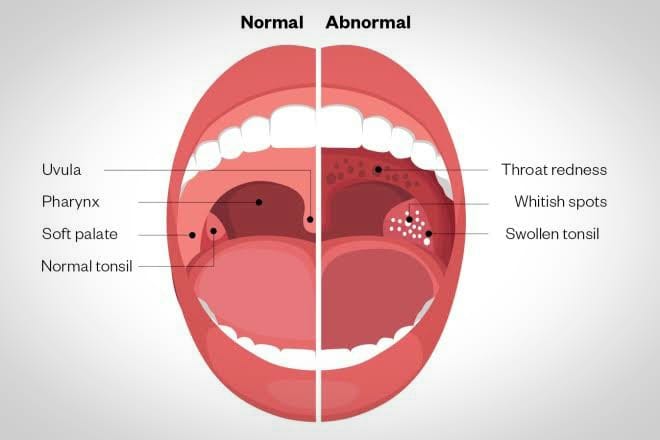 |
| Source: The Pharmaceutical Journal |
It seems that everyone has experienced a sore throat, especially if only one side hurts. Sometimes both are painful.
The following describes the 3 most common causes of sore throat and should be important to note.
1. Mucus behind the nose and throat
This condition is known as Postnasal drip, which is a condition where mucus builds up behind the nose and throat that drips into the throat.
Pain conditions like this are usually caused by allergic rhinitis or certain infections.
If the accumulated mucus cannot drain properly, the throat passages become blocked, causing coughing.
This is what causes a sore throat. Then how to solve it?
Postnasal drip conditions can be treated by treating the cause. Meanwhile, you can relieve the symptoms by taking a decongestant, such as pseudoephedrine to thin the mucus.
2. Inflammation of the tonsils
This condition usually occurs when one of the tonsils becomes inflamed and swollen, caused by a viral or bacterial infection. As a result, the throat becomes sore on the side of the tonsils.
Most tonsillitis is caused by a virus. This condition goes away on its own in about 10 days.
The sufferer can take pain relievers to relieve symptoms and pain, or it can also be done by gargling with salt water.
As for tonsillitis caused by a bacterial infection, it can be treated with antibiotics according to a doctor's prescription.
3. Peritonsillar abscess
A peritonsillar abscess is a bacterial infection that usually appears as a pus-filled lump that grows near one of the tonsils.
Infections with this condition are most common in children, adolescents, and young adults.
This condition can cause a sore throat. The pain is usually much worse on the side of the affected tonsil.
Children and people who experience these conditions require immediate medical attention and treatment.
The doctor or other medical professional will likely use a needle or small incision to drain the pus and drain it from the affected area.
The patient may also be prescribed antibiotics after the abscess has drained. (Hello healthy)













0 Comments